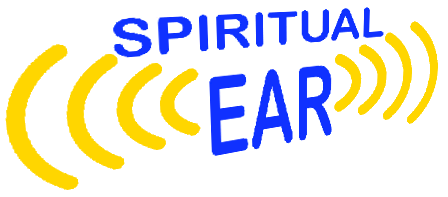

The Ease of Audio Learning
Bless Your Life
...with more A Course In Miracles with the consistent learning opportunities that audio affords.
A Course In Miracles is the likely the most powerful spiritual book of the 20th century, possibly much longer.
The teachings of A Course In Miracles comprise the greatest elements of the world's most successful religions and philosophies, such as Buddhism, Taoism, Christianity, and Advaita
Using audio to learn removes many of the barriers your ego might present to enlightenment:
- Any time, anywhere you can continue your training by just pressing Play.
- ACIM is powerful even one sentence at a time.
- The book is big, but the audio can fit into the palm of your hand and fit in your luggage for sure.
- Audio puts MOMENTUM into your learning by streaming the teaching through your ears.Eyes can skim and skip and look away, but the ears will continue to receive the teaching.
- Audio is LARGER than the book as it will fill your entire space. Especially when played out loud on your stereo or turned UP in the car. The message is so much more powerful and less apt to be filtered than with the mere 9 point tall printed word.
- The printed book requires your eyes and mind to constantly go out and GET. With audio, you RECEIVE, and as long as you are present, these 44 hours will continue to effortlessly steam in and bathe your mind with the gentle but certain truths of A Course In Miracles, which are certain to wash your ego away.
Easier is Better, Automate!
Listening is easier than reading.
But what's not-so-obvious is that listening
may also be more effective than reading.
Of course, if one is too busy to read,
one does not get around to reading.
Audio learning allows the student to absorb material while:
- doing everyday chores
- falling asleep or waking
- driving
- exercising
Now the not-so-obvious that we have learned by personal experience and
interviewing customers:
Momentum
Audio learning of dense or difficult material allows the student to
get "through" the material without getting hung up on details and thus
benefit from the bigger picture of the whole work.
This is certainly how it plays out with A Course In Miracles, since many
words are redefined.
This stream of exposure is particularly beneficial to the analytical
student.
Most of the confusing paragraphs are clarified in the following paragraph,
but the staunchly analytical student may needlessly circle in the first
paragraph to exhaustion and frustration.
Understanding
The narrator for Spiritual Ear is a dedicated 18-year student and facilitator
of A Course In Miracles.
His love, passion, and understanding of the material combined with
professional reading skills delivers clear meaning through not only
annunciation, but also intonation and careful phrasing.
This is very helpful with some of the double-negative wording in the text!
In some cases the successive it's and he's are broken up by use of the actual pronoun from the page: i.e. Miracle, the World, or Holy Spirit, Jesus. Capitalized words are proceeded with the word true so you hear "true Self" to distinguish the printed "self" from "Self."
Alternate Modality
Hearing something is different from reading it,
although both modalities clearly have their strengths.
When we read,
we tend to consume as fast as we can, thus it is an ACTIVE pursuit.
We read at 200 to 600 words per minute and often skim and skip words.
However, common speech is only 150-170 words per minute and does not
skip or skim.
Thus, we spend more time with what we
hear than with what we read.
That means, on average, we think more
about it, we abide with it a bit longer, we give ourselves the luxury
of absorbing it.
Customers report hearing new things come through from
their favorite passages they have read 100 times.
Size Matters
This is not to be underestimated.
When we hear something ... it is bigger.
We confine reading to the page of a book, but sound can fill a room and
our imagination may put no limit on the reader and where he might be as
he reads to us.
The larger size of audio learning can be very helpful
in keeping our attention.
We recommend you experiment with this, especially when reading the Course,
by reading out loud to yourself or turning up the volume of these recordings.
Visualization
When we read from the printed page, we are analyzing words printed in
ink on paper, filling our sight with the black and white images of words
and phrases.
When we listen, it is easier for our mind to picture the
author speaking to us, maybe even looking us in the eye.
For many, the experience is more personal than reading.
Science
Also, there is some scientific support that shows aural learning more
effective than visual:
-
Carnegie Mellon, Center for Cognitive Brain Imaging
—
Eyes and Ears Learn Differently
—
(2001)
this study used fMRI imaging on 20,000 locations
in the brain and discovered that audio learning activates
memory stronger than visual.
Summary is that audio may be better for some,
depending on individual biology and experience.
ccbi.cmu.edu
-
Nazzaro, James R.; Nazzaro, Jean N., Journal
of Experimental Psychology. Vol 84(3), Jun 1970, 477-478
-
Dr. Mriganka Sur, MIT Brain Plasticity studies
show audio cortex better at learning than visual
-
Crigler, A.N., Just, M., & Neuman, W.R. (1994).
Interpreting visual versus audio messages in television news.
Journal of communication, 44(4), 132-149.

